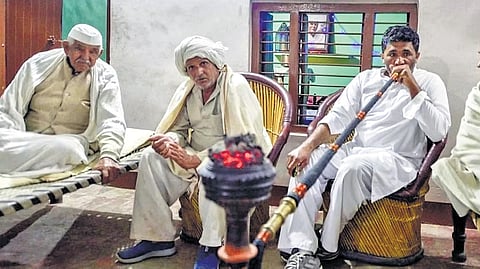

LUCKNOW : Two days before voting in the 2022 assembly elections in western UP, Union home minister Amit Shah made an unprecedented move. Along with hundreds of BJP workers, he went door-to-door seeking support from voters, especially Jats, for party candidates.
This happened immediately after the BJP’s failed discussions for a pre-poll alliance with the Rashtriya Lok Dal (RLD) led by Jayant Chaudhary, a significant Jat leader and the grandson of former PM Chaudhary Charan Singh. Jayant opted to stay aligned with the SP and famously declared, “Main koi chavanni nahin jo palat jaoon” (I am not a coin that flips). Cut to February 2024.
Two months before the Lok Sabha elections, Prime Minister Narendra Modi conferred Bharat Ratna on Charan Singh. And Jayant reacted to this saying: “Dil Jeet Liya” (won hearts). Thus the RLD chief was won over. Solving the Jat puzzle was a major strategic win for the BJP, as it facilitated their entry into the political landscape of UP’s Wild West in the lead-up to the election.
Jats form just 2% of UP’s electorate. Nonetheless, political analysts say the influence of Jats stems from their concentration in a dozen districts of western UP, where they make up 20-25% of the voting population.
The influence of the Jat factor is palpable as the BJP, which continues to reign supreme in the state since 2014, has now joined hands with the RLD, the party that is perceived to advocate for the Jat community.
The Jats are primarily farmers and wield significant economic influence in the region. The extent of Jat influence on votes is evident from the 2009 polls, where the BJP secured only three seats in western UP while RLD (then a minor partner of NDA), won five seats due to support from Jats.
On the other hand, experts note that in the 2014 polls, held in the aftermath of the 2013 Muzaffarnagar riots, Jats were polarised in favour of the BJP, resulting in a sweeping victory for the saffron party in the region. This trend continued in the 2019 Lok Sabha polls.
However, alarm bells rang for the BJP in the 2022 Assembly polls when Jats were divided between their loyalty to Jayant, who was an ally of the SP, and the BJP. And the community drifted away from the BJP over the Centre’s controversial farm laws. Although the three farm laws were withdrawn before the polls, the damage was already done.
The BJP’s loss translated into RLD’s victory. It resulted in a jump in RLD’s vote share, with the number of seats going up from one in 2017 to eight in 2022. It was no wonder that the BJP brass went on an overdrive to lure Jayant, despite opposition from party’s Jat leaders.
“The thinking was that with RLD by our side, whatever discontent among farmers is remaining would go away, and Jats will have no dilemma over which camp to support,” said a senior BJP leader. “Jats wield a lot of influence in society because of their dominant social status. Their firepower is beyond their own community,” he said.
Economic influence
The Jats are primarily farmers and wield significant economic influence in the region. The extent of Jat influence on votes is evident from the 2009 polls, where the BJP secured only three seats in western UP while RLD (then a minor partner of NDA), won five seats due to support from Jats. However, experts note that in 2014 polls, held in aftermath of the 2013 Muzaffarnagar riots, Jats were polarised in favour of the BJP, resulting in its sweeping victory
The ‘J’ Factor
The community’s influence and importance is palpable as BJP has joined hands with RLD — a party that is perceived to advocate for the Jats
Jats comprise around 2% of UP’s population
Around a dozen LS constituencies of west UP have up to 20-25% of Jat population
Their strong social status influences other caste groups
They are farmers, majority being cane growers
They are in good numbers in Baghpat, Mathura, Fatehpur Sikri, Muzaffarnagar, Aligarh, Kairana, Amroha, Bijnor, Hathras.